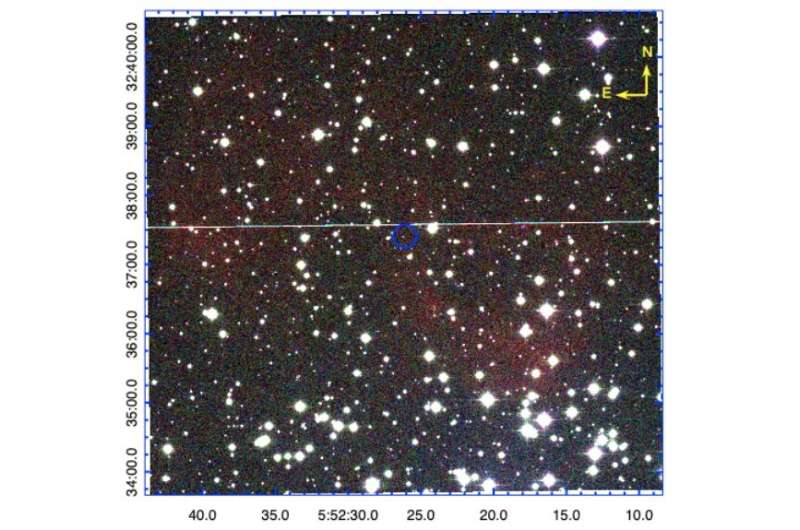August 23, 2022 report
Open cluster Messier 37 hosts a planetary nebula, study finds

Astronomers have performed an astro-photometric study of an open cluster known as Messier 37. One of the main results of this research is the finding that Messier 37 hosts a large and evolved planetary nebula. The study was detailed in a paper published August 12 on the arXiv.org pre-print repository.
Planetary nebulae (PNe) are expanding shells of gas and dust that have been ejected from a star during the process of its evolution from a main sequence star into a red giant or white dwarf. They are relatively rare, but are important for astronomers studying the chemical evolution of stars and galaxies.
At a distance of some 4,500 light years, Messier 37 (also known as M37 or NGC 2099) is the brightest and richest open cluster (OC) in the constellation Auriga. It has a radius of about 10 to 13 light years, mass of about 1,500 solar masses, and contains more than 500 identified stars.
Now, a team of astronomers led by Vasiliki Fragkou of the National Autonomous University of Mexico presents evidence confirming that a PN known as IPHASX J055226.2+323724, first detected in 2008, is part of Messier 37. Moreover, a white dwarf, identified as a high-probability proper motion member of Messier 37, turns out to be the likely central star of this PN.
"The nebula was discovered and classified as a PN candidate by Sabin (2008) from IPHAS [INT Photometric H-Alpha Survey] imagery. Here we present new, high resolution radial velocity data that confirm this rare OC-PN link," the researchers wrote in the paper.
The hypothesis that IPHASX J055226.2+323724 is a member of Messier 37 is mainly based on the consistent radial velocities and proper motions for the confirmed planetary nebula's central star and cluster stars from ESA's Gaia satellite. Furthermore, the PN positional proximity within the cluster tidal radius, reddening and distance agreement also support this scenario.
According to the study, IPHASX J055226.2+323724 is a large (with a radius of 5.2 light years), bipolar and evolved (around 78,000 years old) PN with a low surface brightness. The PN has a patchy internal structure and its emission line spectra suggest Type-I (nitrogen enriched) chemistry. The nebula's central star is a white dwarf with a final mass of about 0.63 solar masses.
Summing up the results, the authors of the paper noted that IPHASX J055226.2+323724 is so far only the third known PN in a Galactic open cluster. They added that its evolved status provides important hints about the maximum observable lifetime of PNe in general.
"This planetary nebula also appears to have the largest kinematical age ever determined and implies increased visibility lifetimes when they are located in clusters," the researchers concluded.
More information: Vasiliki Fragkou et al, The Planetary Nebula in the 500 Myr old Open Cluster M37. arXiv:2208.06101v1 [astro-ph.SR], arxiv.org/abs/2208.06101
© 2022 Science X Network


















